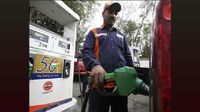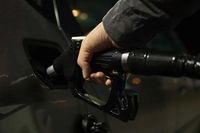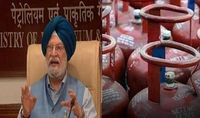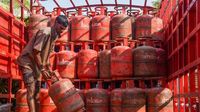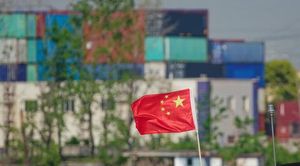On April 7, 2025, the Indian government announced an increase in excise duty on petrol and diesel by Rs 2 per litre each, while assuring consumers that retail prices would remain unchanged. This decision comes in the wake of a decline in global oil prices, with the new excise duty rates set at Rs 13 per litre for petrol and Rs 10 per litre for diesel.
The official order did not specify the direct impact of this excise hike on retail prices, but industry sources indicated that consumers would not see any change at the pump. Instead, it appears that the increased excise duty will be offset against the reductions in fuel prices that were necessitated by the recent fall in international oil prices.
According to the Ministry of Petroleum and Natural Gas, public sector oil marketing companies (PSUs) have confirmed that there will be no increase in the retail prices of petrol and diesel following the excise duty hike. "PSU Oil Marketing Companies have informed that there will be no increase in retail prices of #Petrol and #Diesel, subsequent to the increase effected in Excise Duty Rates today," the ministry posted on social media.
Indian Oil Corporation also echoed this sentiment, stating, "The excise duty increase of Rs. 2 per litre on petrol and diesel by Central Government will not be passed on to the consumers. On one hand, this will insulate the customers from the price hike while on the other hand, the collected amount may be utilized towards under-recovery of LPG, providing relief to Oil Marketing Companies." This assurance aims to alleviate any concerns consumers may have regarding rising fuel costs.
Oil Minister Hardeep Singh Puri further elaborated on the rationale behind the excise duty increase, explaining that it is intended to compensate oil marketing companies for losses incurred due to fluctuating fuel prices. He noted that these companies faced significant losses amounting to ₹43,000 crore related to gas pricing. Puri stated, "The international price of crude came down to around $60 a barrel, but please remember that our oil marketing companies carry inventories over a 45-day period."
In addition to the excise duty hike, the government has also announced a rise in Liquefied Petroleum Gas (LPG) prices, which will increase by ₹50 per cylinder starting April 8, 2025. For beneficiaries of the Pradhan Mantri Ujjwala Yojana (PMUY), the price will rise from ₹500 to ₹550 per cylinder, while the price for others will increase from ₹803 to ₹853.
Puri explained the necessity of this LPG price hike, stating, "The price per cylinder of LPG will increase by ₹50. From 500, it will go up to 550 for PMUY beneficiaries and for others, it will go up from ₹803 to ₹853." He emphasized that the Ministry would monitor the situation as the price adjustments take effect.
The Indian government has a history of adjusting excise duties in response to international oil price fluctuations. During Prime Minister Narendra Modi's tenure, from November 2014 to January 2016, the government raised excise duties on petrol and diesel nine times, capitalizing on falling global oil prices. This strategy resulted in a significant increase in government revenue from excise duties, which more than doubled from ₹99,000 crore in 2014-15 to ₹2,42,000 crore in 2016-17.
Over the years, the government has made various adjustments to excise duties, including cuts in October 2017 and January 2018, but it has also raised duties multiple times in response to market conditions. For instance, in July 2019, the excise duty was raised by ₹2 per litre, and again in March 2020, it was increased by ₹3 per litre each for petrol and diesel.
As of now, petrol prices in Delhi stand at ₹94.77 per litre, while diesel is priced at ₹87.67 per litre. The government has implemented these measures to manage both the fiscal situation and consumer expectations, ensuring that the impact of international oil price changes is mitigated for the average consumer.
In summary, while the excise duty on petrol and diesel has increased, the government has assured consumers that retail prices will not be affected. This strategic move is aimed at balancing the financial health of oil marketing companies with the need to maintain stable fuel prices for consumers amidst a volatile global oil market.
